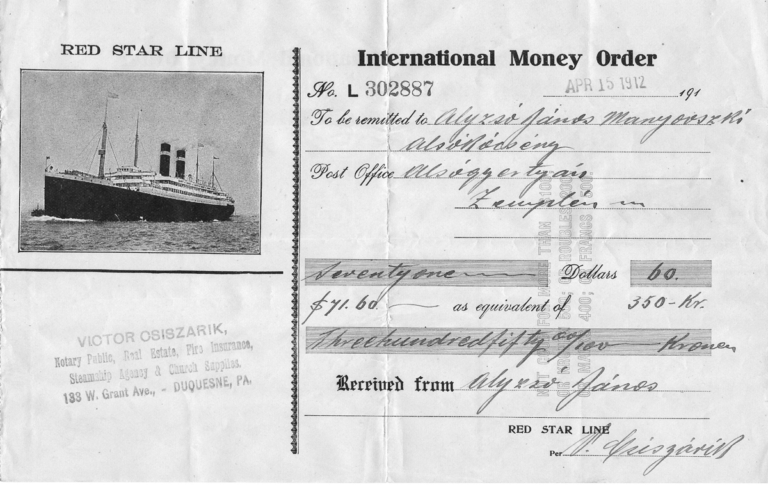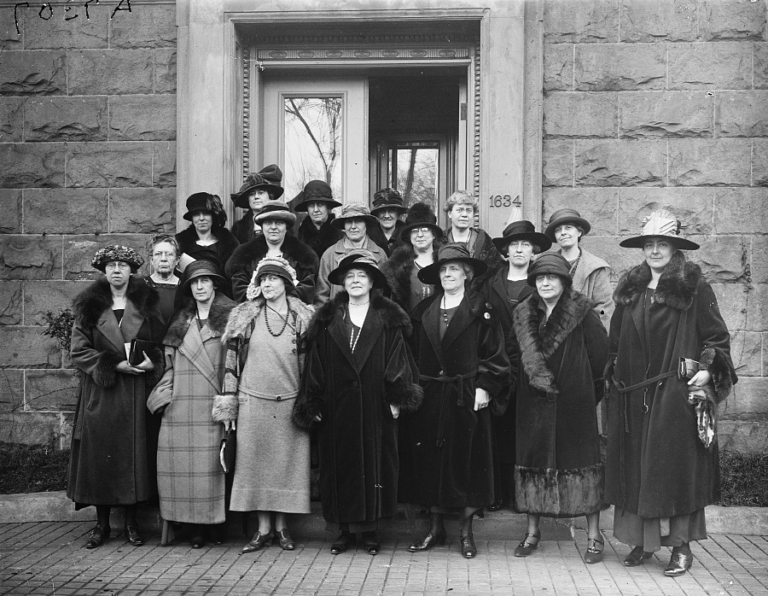Happy Women’s History Month!
Tracing female ancestors is one of the most common roadblocks genealogists encounter during the research process. With unknown maiden names, lack of a paper trail, and a history of laws created by and about men, it’s no wonder the maternal side of your pedigree is often plagued with many missing blanks. Since March is Women’s History Month, it’s a perfect time to “Remember the Ladies.” Here are five ways to investigate the women in your family tree.
1. Create a Timeline. A timeline will help you to place the woman’s life in historical context and track any gaps in your research. You can use your genealogical software program (most have a built-in feature), a spreadsheet, or online programs such as OurTimelines or Timetoast. If you subscribe to MyHeritage.com, you can easily generate a timeline from your family tree. Be sure to include important, personal, local, and historical events on your timeline.
2. Notice Names and Naming Patterns. Investigate different endings for female surnames. In German names, you may see the grammatical marker, “-in” indicating that the person with that last name was a female. This practice was noted in a previous article on this blog “10 Must-Knows to Decipher Your German Ancestor’s Name” by Katherine Schober. For Slovaks, add an –ova to a woman’s name when searching databases or European records. Note first names too. For example, my paternal grandmother’s first name is listed as Elizabeth or Lizzie in U.S. records (English), but in Czech or Slovak appears as Alzebeta and as Erzébet (Hungarian) in her baptismal record. Also, a male child may have a middle name that is his mother’s surname.
3. Start with Her Husband or Male Relatives. While it may sound counter intuitive, perhaps the best place to find details about a female ancestor is in records for her husband/husbands (yes, she could have married more than once). If unmarried, check records for her brothers or other male relatives. U.S. Federal Census Records (1790-1950) provide useful snapshots of an ancestor’s life. When searching for females, learn to look more carefully at some of the columns of specific censuses for clues about her marriage and family life. The 1900 census (column 10) and 1910 census (column 9) indicate the number of years of marriage for each married person. With subtraction, you can determine an approximate date of marriage, and then follow up by looking for marriage license applications and other marriage records.

Wedding Photograph of John Alzo and Elizabeth Fencak, courtesy of Lisa A. Alzo
If your female ancestor became a United States citizen, naturalization records can provide valuable clues. Look for a woman’s official application documents, including her Declaration of Intent and Petition for Naturalization. Until 1922, wives were sometimes listed on their husbands’ naturalization records. After that, you can find separate records for married women (children under 16 were on their fathers’ forms). Before 1906, immigrants filed for naturalization in their municipal, county, state or federal court. For naturalizations after 1906, submit a Freedom of Information Act request to the United States Citizenship and Immigration Service (USCIS). Note: This is a fee-based service. Before doing so, first check to see if FamilySearch or subscription based Ancestry.com have digitized records for the location(s) you are researching. If the woman didn’t naturalize, check Alien Registration Records (A-Files). An excellent resource is Marian L. Smith’s article, “Any woman who is now or may hereafter be married . . .”: “Women and Naturalization, ca. 1802-1940” from Prologue Magazine Summer 1998, Vol. 30, No. 2. Click here to read the full article. Look for clues in photographs, newspapers, yearbooks, bridal books, employment, convent, military and tax records, books, monographs, and other records. An international money order found in papers belonging to my paternal grandparents lists my great-grandmother’s maiden name.

Image courtesy of Lisa A. Alzo
4. Find Her Friends. Your female ancestors may not have had Facebook , Instagram, or Twitter, but that doesn’t mean they were any less social. Who were their neighbors? Check family documents or census records. Look carefully at who witnessed her marriage, or naturalization petition, or who served as godparents for her children. When your grandmother immigrated, did she travel with family or a companion? If your female ancestor belonged to a church group, auxiliary association, club or organization, perhaps you can track down a membership application, scrapbook, cookbooks, or other ephemera to learn more about her social interactions (look for these in libraries, archives, museums, and even on eBay). Also, check to see if she is mentioned in local histories.

Harris & Ewing, photographer. Group of Women. United States, 1923. Photograph. https://www.loc.gov/item/2016892823/.
If you need additional ideas, check out American Women: A Guide to Women’s History Resources at the Library of Congress.
5. Tell “Her” Story. One of the best strategies for making sure the ladies are remembered is to share the stories from your own research. For Women’s History Month, I run the Fearless Females Blogging Prompts series on my blog, The Accidental Genealogist. The series consists of 31 blogging prompts designed to help you write about the women in your family tree. A blog post is often referred to as “cousin bait” so you could potentially connect with a reader who has more information about your female ancestor. While tracing female ancestors can be difficult and challenging, it is not impossible. With a bit of creativity and patience, you can trace your maternal ancestry. We all need to explore the histories of our female ancestors and then document our findings for future generations—to give voice to the stories of the silent women from our past.

About the Author:
Lisa A. Alzo is a freelance writer, instructor and lecturer, and is the author of 11 books, including the award-winning, Three Slovak Women, and hundreds of magazine articles. Visit her website, http://www.lisaalzo.com for more information. She teaches an online course on Finding Your Female Ancestors at ttps://www.researchwriteconnect.com/femaleancestors.

One Response
Thank you. Genealogy is like a relay race where each relay is very short and it takes hundreds of relays to finish the race. Your “tricks of the trade” can reduce the number of relays needed to reach the finish.